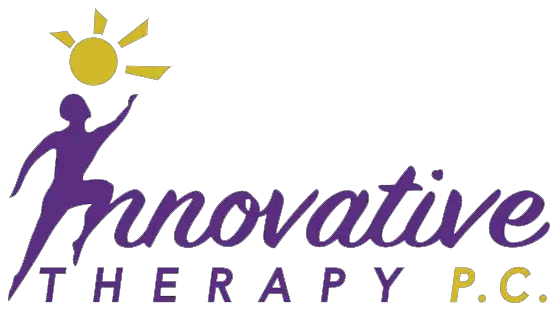After dealing with a painful sports injury, I quickly realized how frustrating recovery can be. Generic rehab routines didn’t work for my specific needs, and I felt stuck with slow progress and repeated setbacks. That’s when I discovered the real value of custom physiotherapy plans for sports recovery, designed around the unique needs of each athlete’s body and injury type.
These personalized plans changed everything. With expert guidance, targeted exercises, and continuous adjustments based on my progress, I was finally able to heal faster, regain full movement, and return to the sport I love being stronger than before. It wasn’t just about fixing the injury; it was about rebuilding my performance safely and effectively.
If you’re tired of cookie-cutter recovery programs, keep reading to see how a custom approach can speed up your healing and protect you from future injuries.
Why Personalized Physiotherapy Is Crucial for Athletes

No two athletes are the same. We all have different strengths, weaknesses, training styles, and injury risks. So why would one-size-fits-all rehab plans work for everyone? From my own experience, they don’t. Athletes need tailored solutions that address their unique sport demands and physical condition.
Generic treatment often overlooks underlying movement dysfunctions or ignores individual biomechanics. In contrast, custom physiotherapy is focused, flexible, and centered on your body’s real-time response to treatment. Whether you’re a footballer, swimmer, or runner, your injury and your recovery need to reflect the intensity and type of sport you play.
By working closely with physiotherapists who understand athletic performance, I found a plan that not only treated my injury but optimized my movement, strength, and prevention strategies.
Understanding Sports Injuries That Require Physiotherapy
Sports injuries can range from mild muscle strains to more serious ligament tears. Here are some common ones that often require expert physiotherapy:
- Muscle strains and tears
- Ligament sprains (e.g., ACL, MCL)
- Tendonitis or tendinopathy
- Rotator cuff injuries
- Tennis elbow or golfer’s elbow
- Ankle sprains and chronic instability
- Shin splints and stress fractures
Some injuries heal faster, while others can take months without the right support. That’s where a custom rehabilitation plan makes a difference.
Also Read: Effective Treatments for Chronic Knee Pain: From Diagnosis to Relief
Key Elements of a Customized Physiotherapy Plan
A well-designed recovery plan is not just about exercises. It’s a comprehensive system that adjusts to your evolving needs.
Key components include:
- Initial Assessment
- Functional movement screening
- Pain analysis and injury history
- Functional movement screening
- Treatment Modalities
- Manual therapy
- Ultrasound, dry needling, or cupping
- Manual therapy
- Exercise Prescription
- Strength, flexibility, neuromuscular control
- Strength, flexibility, neuromuscular control
- Progressive Overload Planning
- Adjusting exercise intensity over time
- Adjusting exercise intensity over time
- Real-Time Monitoring
- Data-driven changes in plan based on performance
These elements ensure that recovery is safe, fast, and effective. Something generic routines can’t promise.
Differences Between Generic vs. Custom Physio Plans
| Feature | Generic Plan | Custom Plan |
|---|---|---|
| Injury-Specific Adaptation | Limited | Full Adjustment |
| Monitoring & Progression | Minimal | Ongoing & Data-Driven |
| Sport-Specific Movements | Not Included | Fully Integrated |
| Therapist Involvement | One-time or periodic check-ins | Continuous Feedback |
| Risk of Re-Injury | Higher | Significantly Lower |
Benefits of Custom Physiotherapy for Long-Term Recovery
From my own healing journey, here’s what I’ve found most valuable:
- Faster healing through targeted intervention
- Reduced inflammation with precise modalities
- Better mobility via joint mobilization and neuro re-education
- Stronger muscles tailored to prevent future injury
- Improved posture and biomechanics
Custom plans also allow early detection of recurring issues, helping me stay fit and pain-free over the long run.
How My Rehab Plan Changed My Sports Performance

At first, I just wanted to recover. But after a few weeks on a custom physio plan, something unexpected happened. I started to move better. My posture improved. I became more agile and responsive. I wasn’t just healing; I was becoming a better athlete.
My physiotherapist didn’t just treat the pain. They taught me how to build better movement habits, activate underused muscle groups, and re-train my nervous system to support balance and coordination. This was a total upgrade, not just a fix.
What to Expect in a Custom Plan
- Personalized goals based on your sport and injury
- Regular reassessments and progress tracking
- One-on-one guidance and exercise demonstrations
- Recovery timelines customized to your healing response
- Nutritional and rest recommendations (if needed)
This kind of attention and support made me feel seen, not just as a patient but as an athlete.
Multidisciplinary Approach in Sports Recovery
The best part about custom physiotherapy is the collaboration. Your physiotherapist often works with:
- Sports medicine doctors
- Orthopedic surgeons
- Athletic trainers
- Performance coaches
- Nutritionists
Roles in a Multidisciplinary Recovery Team
| Professional | Role in Recovery Plan |
|---|---|
| Physiotherapist | Design and monitor movement therapy |
| Sports Doctor | Diagnose and guide treatment direction |
| Strength Coach | Assist in return-to-play conditioning |
| Nutritionist | Optimize healing with diet and supplements |
| Psychologist | Support mental focus and motivation |
This integrated care ensures nothing is overlooked.
Steps in Starting Your Custom Rehab Journey
- Initial Consultation – Discuss goals, injury history, and current limitations
- Assessment Session – Measure strength, flexibility, and range of motion
- Plan Creation – Build a fully personalized routine
- Treatment Sessions – Combine manual therapy with exercises
- Reassess & Progress – Adjust intensity and add new movements
- Return to Sport – Transition back with proper conditioning
Choosing the Right Clinic for Your Recovery Plan
When looking for a clinic or physiotherapist, make sure they offer:
- Experience in sports-specific injuries
- Use of modern technologies (like EMG or motion analysis)
- Clear communication and progress updates
- Willingness to work with your coaches or trainers
Don’t settle for less. Your recovery deserves top-tier attention.
FAQs: Quick Answers to Common Questions
How long does a custom physiotherapy plan last?
Most plans range from 4 to 12 weeks depending on injury severity and sport-specific needs.
Are custom plans more expensive than generic rehab?
Initially, yes but they save costs long-term by reducing recovery time and injury recurrence.
Can I do these exercises at home?
Absolutely. Most plans include at-home movements, with check-ins for form correction.
Do custom plans work for old injuries too?
Yes. Even long-term or recurring injuries can improve significantly with personalized care.
Is a referral required for custom physiotherapy?
Not always. Many clinics accept walk-in or online assessments without a doctor’s note.
Conclusion
When I first got injured, I wanted a quick fix. What I got was something much better. A plan that not only helped me recover but reshaped how I train, move, and perform. Custom physiotherapy plans for sports recovery are a game-changer for athletes of all levels.
Whether you’re a weekend warrior or an elite competitor, don’t leave your recovery to chance. Get expert support, tailored care, and a strategy that works with your body, not against it.
Also read: Effective Shoulder Pain Physical Therapy: A Guide to Relief and Recovery





